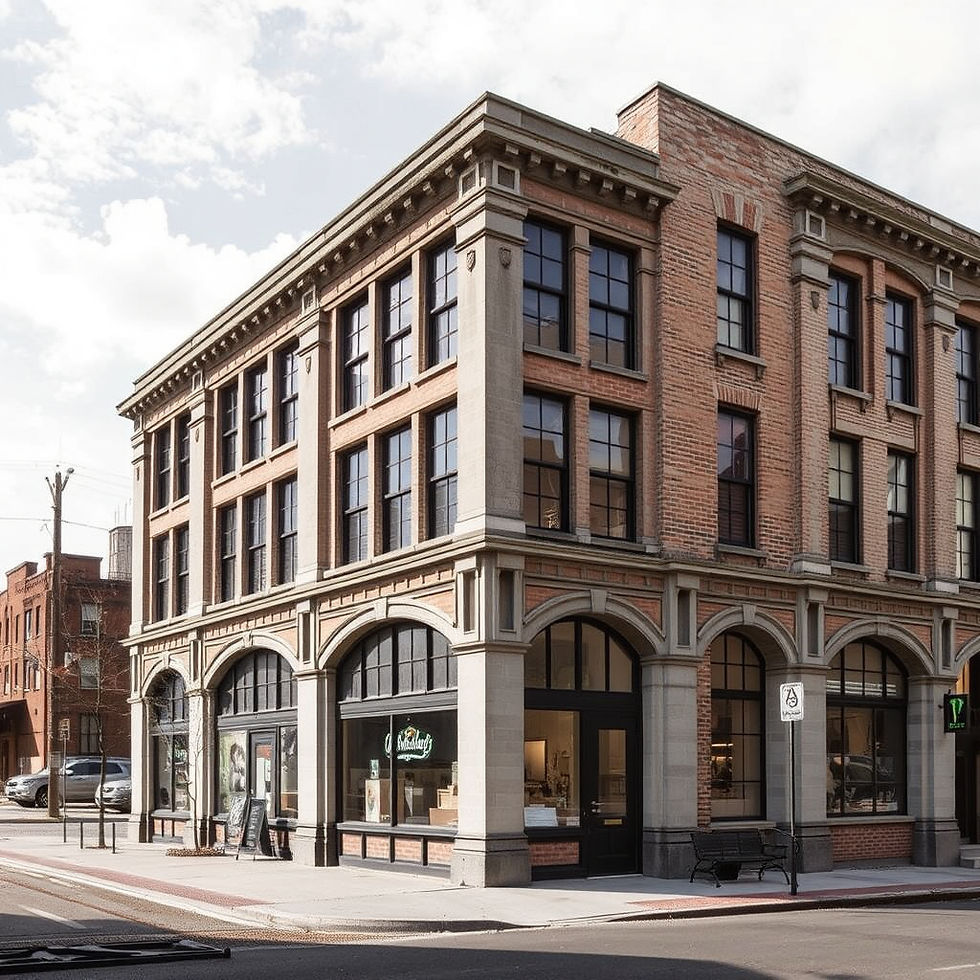A Guide To Building A Side Double Storey Extension
- Phase Zero
- Dec 7, 2023
- 3 min read
Updated: Oct 11
As urban living spaces become more constrained, homeowners are increasingly turning to side double-storey extensions to expand their properties. These extensions offer a practical solution for adding significant space — whether for extra bedrooms, home offices, or additional living areas — while maintaining the existing garden and rear space.
This guide explores the benefits, planning considerations, design strategies, and technical requirements of side double-storey extensions, helping you make informed decisions for your home.
1. What Is a Side Double-Storey Extension?
A side double-storey extension involves extending a property upwards and sideways over an existing footprint, typically along the side boundary of a semi-detached or detached home. Unlike rear extensions, which expand into the garden, side extensions often enhance street presence and overall property massing, adding both functionality and architectural character.
They can be permanent or partial, depending on site constraints, existing building lines, and design goals.
2. Key Benefits of Side Double-Storey Extensions
A. Significant Space Gains
By building both upwards and sideways, you can maximize internal floor area. Common uses include:
Ground floor: Kitchen, dining, or utility area expansion.
First floor: Additional bedrooms, en-suites, or home offices.
B. Efficient Use of Existing Land
Side extensions make the most of unused space without reducing garden size, preserving outdoor areas for recreation, landscaping, or future projects.
C. Property Value Enhancement
A well-designed side extension can increase property value substantially, particularly in sought-after urban or suburban areas. Its street-facing design also improves curb appeal, making it attractive to future buyers.
D. Design Flexibility
Side extensions allow architects to:
Integrate modern aesthetics or maintain traditional façades.
Create cohesive internal layouts connecting seamlessly to the existing structure.
Introduce large windows, balconies, or glazing features to enhance natural light.
3. Planning Permission and Regulations
Side double-storey extensions often require planning permission due to their size and potential impact on neighbouring properties. Key considerations include:
Permitted Development Rights (PDR): Some side extensions fall under PDR, but restrictions usually limit width and height.
Impact on neighbours: Extensions should comply with the 45°/25° daylight rules to avoid overshadowing adjacent homes.
Conservation Areas and Article 4 Directions: Extra permissions may be required in protected areas.
Building Regulations: Compliance is mandatory, covering structural integrity, insulation, fire safety, and drainage.
4. Architectural and Design Considerations
A. Aesthetic Integration
Match rooflines, materials, and façade treatments with the existing property for cohesion.
Alternatively, create a contemporary contrast using timber cladding, render, or zinc panels for a modern appearance.
B. Roof Design
Mono-pitch roofs are common, minimizing impact on neighbours.
Hip roofs or gabled designs can integrate the new volume with the existing roof for a traditional look.
C. Natural Light and Ventilation
Include side-facing windows, rooflights, or glazed link corridors to maintain bright, airy interiors.
Use internal layout strategies to connect new spaces to existing living areas.
D. Sustainability
Incorporate high-performance insulation in walls and roofs.
Install energy-efficient glazing and lighting.
Consider solar panels or green roofs where feasible.
Sustainable strategies ensure your extension reduces energy use and supports long-term environmental goals.
5. Structural and Technical Considerations
Building a side double-storey extension requires careful technical planning:
Foundations: Strong foundations are essential, especially near property boundaries.
Load-bearing walls: Engineers assess structural requirements for supporting the new floor.
Integration with existing services: Plumbing, electrical, and HVAC systems must be seamlessly connected.
Fire separation: Ensure fire safety compliance, particularly between new and existing structures.
Working with an architect and structural engineer is crucial to achieving both safety and design excellence.
6. Interior Design Opportunities
Side extensions allow creative use of space:
Open-plan layouts: Combine kitchen, dining, and living areas for fluid, multifunctional spaces.
Flexible rooms: Home offices, gyms, or guest rooms can be added without compromising family areas.
Storage solutions: Integrate built-in units, eaves storage, or cleverly concealed cabinetry.
Connection to garden: Consider side access, light wells, or glazed screens for seamless indoor-outdoor flow.
7. Maximizing Value and Functionality
A successful side double-storey extension balances:
Form and function: Ensuring the extension complements the existing home layout.
Street appeal: Matching or enhancing the architectural style.
Sustainability: Using energy-efficient materials and low-carbon solutions.
Adaptability: Planning for future changes in family size or lifestyle.
These elements make the extension a long-term asset rather than a temporary solution.
8. The Role of Professionals
Although some homeowners may attempt DIY or partial guidance projects, side double-storey extensions require professional oversight:
Designers: Deliver designs that comply with planning and building regulations while achieving aesthetic and functional goals.
Structural Engineers: Ensure the building is safe and durable.
Planning Consultants: Navigate approvals, particularly in sensitive or restricted areas.
Contractors: Execute construction to high standards with minimal disruption.
Professional input ensures your extension is compliant, well-designed, and enhances both value and lifestyle.
Conclusion
A side double-storey extension offers one of the most efficient ways to expand your home, improve functionality, and boost property value. By carefully integrating design, planning, and sustainability, homeowners can achieve spacious, modern, and energy-efficient living areas.
The key is to approach the project holistically: balancing architectural coherence, technical feasibility, and lifestyle needs. Done correctly, a side extension is more than an addition — it’s a transformative investment in your home and your family’s future.



